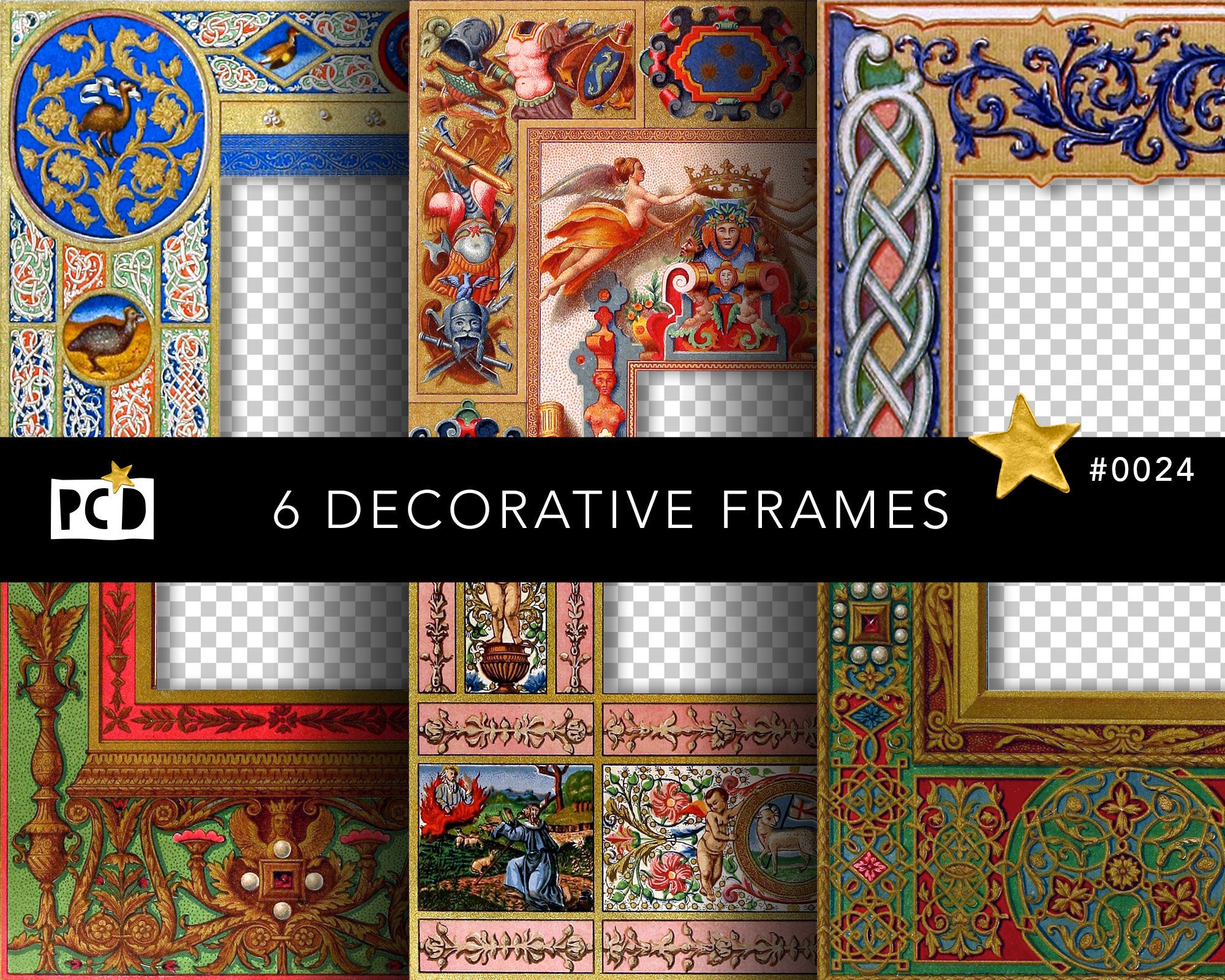

We brainstormed lots of potential themes, including:

Once the kids sat down to make their own illuminated manuscript, I encouraged them to personalize their page which would consist of a border and their name in the center. Our co-op read this before our art project, but you could easily read it with your kids or to your group the day of if time permits. The whole process of constructing a book and creating the painting materials is a part of the story (and even includes lovely border designs on many of the pages). If you have time, read this beautiful picture book. Every single page is preserved with high-quality digital images and helpful footnotes! Step 4: Read Marguerite Makes a Book You can also find a fully interactive version of the Book of Kells online. The Illuminated Page: Ten Centuries of Manuscript Painting in The British Library by Janet Backhouse.The Art of the Bible: Illuminated Manuscripts from the Medieval World by Scot McKendrick.The Grand Medieval Bestiary by Christian Heck.Meetings with Remarkable Manuscripts by Christopher de Hamel.I’m sure there are many other excellent tiles available if you can’t find these. Here are some of the books I found at the library. I didn’t have access so I passed around the books to give them a sense of the artwork. If you’re with a group and have access to a computer and a projector, there are lots of gorgeous examples of illuminated manuscripts online. I requested a bunch of art books on illuminated manuscripts from our library to show the kids.

So I drew the border in pencil to speed things along and to ensure that each child could get started on their border design quickly. So I knew I didn’t want to waste time with ruler work. At our co-op, I was only going to have 40 minutes for this project with kids ranging from 4 to 14. Why? Many illuminated manuscript pages have gorgeously intricate borders. Once the cardstock was fully dry, I broke out my ruler and pencil and drew a one-inch border around each piece of paper. Step 2: Add a border to your Manuscript Pages
ILLUMINATED MANUSCRIPT BORDERS PRO
Pro tip: After the cardstock dries most of the way, stack heavy books on top of the pages to keep the paper from curling and warping too much as it finishes drying. A fun bonus was that the wax paper pressed against the wet surface created interesting effects as the tea dried. Then I stacked the wet cardstock between wax paper (parchment paper would work too) since I didn’t have a large surface on which to dry 36 pieces of paper. And could even get the kids in on this process! If you have the time, you could do this several times to build up the washes for a more layered and aged look. Then I used a paintbrush from my kids’ stash of art supplies and brushed on the tea. I boiled a cup of water and added 4 black tea bags and let it steep. There are a few ways to do this but because I needed to prep for 36 children, I opted for the simplest approach. To replicate the look of vellum or parchment, I stained the plain white cardstock with tea. Bonus: Marguerite Makes a Book by Bruce Robertson.Here are the simple steps you can follow to create Illuminated Manuscripts with your crew! Supply List Also, this topic gave us an opportunity to talk about a wide range of manuscripts (religious, historical, etc.) and even the funny monks who wrote comments in the margins, like “I am very cold” or “Oh, my hand”. It’s easily adjustable for small or large groups, with more or less complexity depending on how much time you have for prep work. The illuminated manuscript ended up being an ideal project for our co-op. Because there aren’t any named artists until the very end of the Middle Ages (think, Cimabue and Giotto), I realized that instead of focusing on an artist, we could learn about a technique–the Illuminated Manuscript! This year, we’re studying the Middle Ages with our Homeschool Co-op, and I was tasked with creating an art project for our group.


 0 kommentar(er)
0 kommentar(er)
